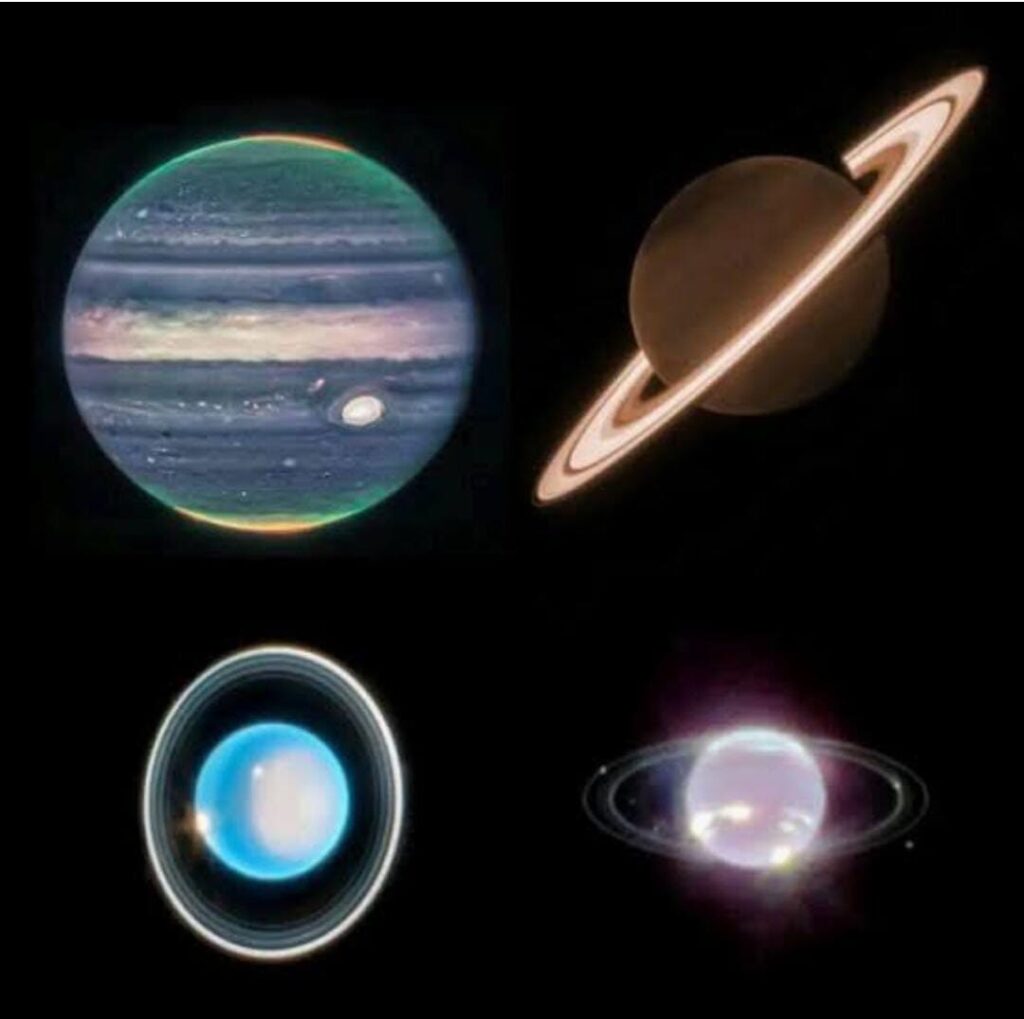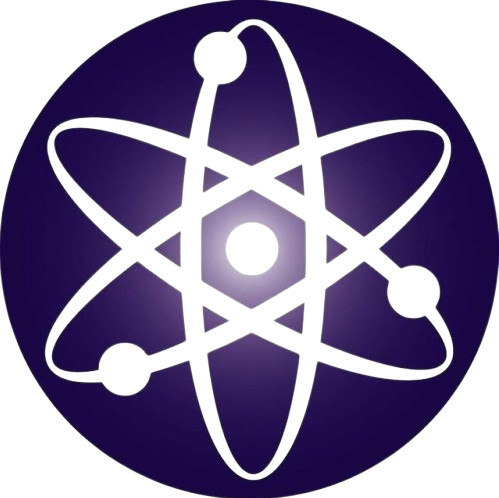What Crazy Secrets Are Our Giant Planets Hiding? JWST Is Spilling the Tea!
Have you ever looked up at the stars, maybe while grabbing a late-night chai, and wondered what’s up with those huge planets out there? I totally have, and let me tell you, the James Webb Space Telescope (JWST), which launched on Christmas Day 2021, is like our cosmic buddy dishing out the wildest secrets about Jupiter, Saturn, Uranus, and Neptune—our solar system’s gas giants. These planets are massive, with epic storms, shiny rings, and moons that might just hint at alien life. Let’s dive into what JWST’s found, like we’re chatting over some spicy street food, and see why it’s got me so hyped!
Why JWST Is the Ultimate Space Rockstar
JWST isn’t just any telescope—it’s like a superhero with magic glasses that see infrared light. That means it can peek through thick clouds and dust, stuff older telescopes like Hubble couldn’t handle. It’s like going from a grainy old video call to a 4K movie.
It’s got cool gadgets: a camera (NIRCam) for super-clear pics, a heat sensor (MIRI) for catching warm spots, and a spectrograph (NIRSpec) that figures out what stuff is made of, like a chef sniffing out spices in a curry. This is why JWST’s showing us the gas giants in ways that make me go.

For us, it’s like getting a backstage pass to the universe. We’re seeing Jupiter, Saturn, Uranus, and Neptune like never before, and it’s seriously awesome.
Jupiter: The Big Daddy with Major Vibes
Jupiter’s the biggest planet we’ve got, like the Baahubali of the solar system. It’s got that huge Great Red Spot—a storm bigger than Earth—and some sneaky rings most people don’t even know about. When JWST checked it out in 2022, I was like, “Bhai, kya baat hai!”
The pics showed glowing auroras at Jupiter’s poles, like our northern lights but on steroids. They’re powered by the Sun, Jupiter’s super-strong magnetic field, and its volcanic moon, Io, which adds some extra drama. It’s like a cosmic DJ spinning lights at a party!
JWST’s spectrograph found chemicals like phosphine and sulfur in the air. These might come from Io’s volcanoes or deep inside Jupiter. To me, it’s like finding a secret ingredient in your mom’s daal that makes it pop.
The rings, made of dust from Jupiter’s moons, looked sharper than ever. They’re not as blingy as Saturn’s, but JWST showed how they’re built, like solving a cosmic Rubik’s Cube.
Tip: Hit up NASA’s website for free Jupiter pics. They’re perfect for your phone wallpaper or to flex your space knowledge with friends!
Warning: Don’t buy into random online claims that JWST found aliens on Jupiter. It’s just cool science, not a sci-fi flick.
Saturn: The Planet with Bling That Slays
Saturn’s the solar system’s fashion icon, with those drop-dead gorgeous rings. In 2023, JWST turned its infrared magic on, and the rings lit up like a chandelier at a desi shaadi. I was glued to the screen!
The MIRI tool showed the rings are made of ice and rock bits, maybe from a smashed moon or comet. It’s like figuring out where your favorite bangle came from—ancient history stuff!
Saturn’s atmosphere has this weird six-sided storm at the north pole, called a hexagon. JWST caught it in detail, showing how it moves and heats up. I think it’s crazy that a storm can look like a geometry problem!
Then there’s Titan, Saturn’s superstar moon, bigger than Mercury. It’s got a thick, hazy atmosphere with methane and chemicals that might be life’s building blocks. JWST found stuff that’s like the base for a cosmic halwa. Could life start there? Fingers crossed!
Tip: Try spotting Saturn with a small telescope at home. Download an app like SkyView to find it on a clear night—it’s a vibe.
Value: Saturn’s weather patterns could teach us about Earth’s climate, like how to predict monsoons better. That’s super handy for planning outdoor plans!
Uranus: The Shy Guy with a Wild Side
Uranus is like that quiet friend who surprises you with a crazy story. It’s far away, pale blue-green, and tilted 98 degrees, so its seasons are totally bonkers—one side gets sunlight for decades! JWST’s 2023 pics made me go, “Uranus, tu toh hero nikla!”
The telescope saw through Uranus’ methane haze, which gives it that cool color, and spotted active clouds and storms. I always thought Uranus was dull, but it’s got some serious action going on.
Uranus’ rings are faint, like a soft whisper compared to Saturn’s loud bling. JWST showed their dusty structure clearly, which helps scientists figure out how they formed.
The moons, like Ariel and Miranda, might have ice volcanoes—think slushy ice erupting instead of lava. That’s so wild! It makes me think there could be hidden oceans under those icy surfaces.
Tip: If you’re a student, sketch Uranus’ weird tilt for a science project. It’s a fun way to impress your teacher!
Warning: Some online pics of Uranus are jazzed up with fake colors. The real ones are less bright, but the science is what’s cool.
Neptune: The Faraway Blue Stunner
Neptune’s the farthest gas giant, so it’s super hard to see. But JWST’s like, “Chill, I got this!” In 2022, it gave us the clearest pics ever of Neptune’s vibrant blue atmosphere and faint rings. I was totally floored.
The MIRI tool caught storms and hot spots, showing Neptune’s a lively place. It gives off more heat than it gets from the Sun, which is a total head-scratcher. It’s like a friend who’s always hyped up for no reason.
JWST found methane and other chemicals in Neptune’s air, like getting a peek at a cosmic recipe for kulfi. The rings, made of dust and ice, looked sharper, helping us understand why they’re still there after billions of years.
Neptune’s moon Triton is a weirdo, probably a captured space rock. JWST saw nitrogen and methane in its thin atmosphere and hints of geysers. Geysers on a moon? That’s the kind of thing that makes you want to send a spaceship out there!
Tip: Check out planetarium shows near you—they often use JWST’s Neptune pics to make space feel real.
Value: Neptune’s heat patterns could help us understand how planets work, which is key for finding Earth-like worlds out there.
Why This Is a Big Deal for Us
So, why should we care? JWST’s discoveries are like rewriting our solar system’s storybook. We’re learning how these gas giants formed, what’s in their air, and how their rings and moons tick. It’s like getting the director’s cut of a movie you love.
These planets are also practice for studying faraway exoplanets. The storms and chemicals we see could tell us what other worlds are like. That’s huge for finding alien life someday!
The moons are the real MVPs. Titan’s got life-friendly chemicals, Io’s spitting volcanoes, and Triton’s got geysers. These could guide future missions, like NASA’s Europa Clipper or maybe a Uranus probe. It’s like a cosmic treasure map.
Value: Teachers use JWST pics in class, making science fun for kids. I remember planet posters sparking my curiosity as a kid—same energy here!
Challenges and What’s Coming Next
Studying gas giants isn’t easy. They’re super bright, which can mess with JWST’s fancy gear, so scientists have to be extra careful. Plus, JWST’s busy checking out far-off galaxies too, so it’s got a packed schedule.
But the future’s lit! JWST will keep watching these planets, tracking changes. Teaming up with other telescopes, like ALMA, could give us even more juicy details. Maybe we’ll find new moons or crazier storms!
Tip: Follow NASA on Instagram or X for JWST updates. They post dope stuff that’ll make you sound like a space guru.
FAQs to Clear the Air
Why’s JWST so special for gas giants?
It sees hidden stuff like atmospheres and rings, helping us understand space weather and planet formation.
Can I see these planets myself?
Yup, with a small telescope! Apps like Star Walk can help you spot them.
Any new missions planned?
There’s talk of a Uranus orbiter. JWST’s data is setting the stage.
Does this help Earth?
Totally! Gas giant magnetic fields teach us how to protect tech from solar storms.
Is JWST finding life?
Not on the planets, but moons like Titan have life-friendly chemicals. It’s a start!
Wrapping It Up
The James Webb Space Telescope is like our cosmic dost, showing us Jupiter, Saturn, Uranus, and Neptune in ways that blow my mind. From glowing auroras to moons with geysers, these gas giants are full of surprises. My advice? Stay curious—check out NASA’s pics, try stargazing, or share this with your squad. It makes the universe feel like it’s right next door. Keep looking up, because there’s so much more out there to discover!
